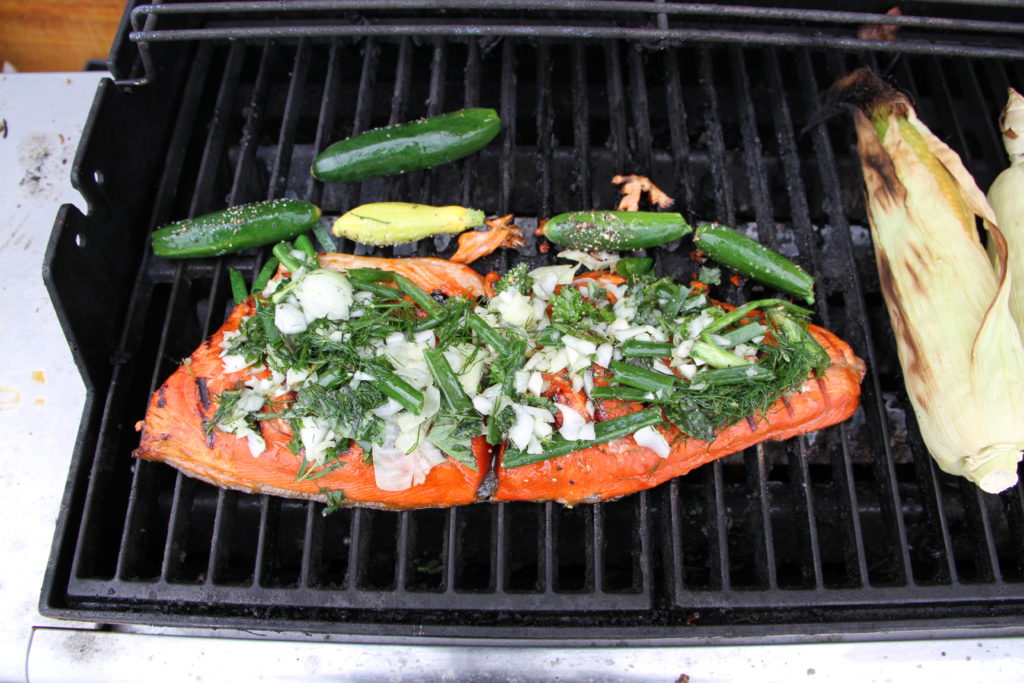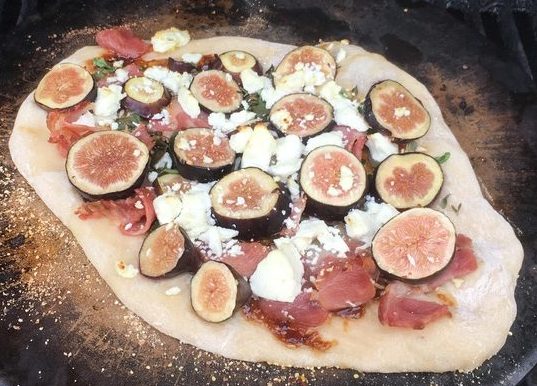Want to save money, lose weight and build closer relationships with your family this year? Resolve to cook more at home. In The Power of Habit: Why We Do What We Do in Life and Business,Charles Duhigg talks about the power of keystone habits to influence many areas of our lives. In other words, starting one good habit can lead to more good habits (or breaking bad ones). Cooking at home is a good example of a keystone habit.

Barbecuing Alaskan salmon with fresh herbs is a simple way to make a delicious meal.
If you want to save money this year, cooking at home instead of going out to eat is a great way to do that. Even when compared with fast food, you can still save money by cooking at home. Leanne Brown created an excellent and free online cookbook called Good and Cheap: Eat Well on $4/day. The Supplemental Nutrition Assistance Program Education is an excellent source for information if you want to cook healthy on a tight budget. Of course, you can always find loads of Alaska-centric recipes on the UAF Cooperative Extension Service website.
One of the greatest benefits of cooking at home is that you’re more aware of what you’re eating. If you make spaghetti sauce, you choose whether or not to dump sugar in the sauce. If you buy a can of ready-made sauce, you get the sugar whether or not you want it. Even if you scrutinize the nutrition label, it takes work to translate it into the serving size that you’re actually going to eat. There are all sorts of hidden ingredients in ready-to-eat or processed foods that may or may not be healthy for us. Go one step further and start a garden, and you’ll know even more about what’s in your food.
Yet another great reason to cook at home is because it gives you the chance to eat uniquely and to exercise your own cultural autonomy. Whether you have a unique cultural heritage, you like to experiment with cuisines from other countries, or you value locally grown, hunted, or fished food, you can cook accordingly. For example, instead of ordering another burger at another restaurant, you could make moose meatballs with lingonberry sauce. Sandor Katz explores the dizzying diversity of ways cultures ferment foods around the world and talks about the importance of preserving these traditions in The Art of Fermentation.
Research has shown that youth who eat with their families have lower rates of obesity, eating disorders, substance abuse and more. Family meals provide an opportunity to connect and learn more about your family. The Family Dinner Project is a great starting point for recipes, conversation starters and information on why family meals are important. And here are a few more conversation starters.

This is one of my new, favorite pizzas. I top the sourdough with fig spread, fresh figs, garlic, lemon thyme, European bacon (pre-cooked) and goat cheese. Then I grill it on a pizza stone on the grill. Fig and pig pizza.
As someone who spent years eating very simple and basic meals that did not require much cooking (spaghetti topped with jarred spaghetti sauce, anyone?), I can relate to being stuck in the rut of hurried, quick meals that don’t require much preparation or cleanup. Also, having lived for most of my life in a dry cabin, I know it’s not always easy for Alaskans to cook elaborate meals and to wash the resulting dishes without running water.
I changed course after reading Cooked: A Natural History of Transformation by one of my favorite authors, Michael Pollan, and later, The Art of Fermentationby Sandor Katz. Before I read those books, I operated more in line with other millennials (I’m a millennial by a smidge), who look for convenience when eating. According to a 2017 Economic Research Service report, millennials were almost three times more likely to eat out in a given week than older generations (65 and older). They also spent about one hour less on food prep and cleanup per week than the average of all of the other generations. Even when eating at home, millennials tend to buy more ready-to-eat foods at the grocery store and seek out convenience.
Now cooking for me is a priority, and I enjoy trying new flavors and dishes that I might never find at a local restaurant or grocery store. I also like saving money, knowing what goes into my food and eating with my family. It’s a habit I don’t regret changing.
Previously published in the Fairbanks Daily Newsminer January 6, 2019.